Pillowy Japanese steamed buns with a juicy pork center perfumed with ginger, shiitake mushrooms, and soy sauce.
On an icy night in Tokyo, numb fingers seek comfort. They find it in the plume of steam rising from a street vendor’s bamboo steamer. Inside are snow-white buns, so soft they tremble; their pleats release aromas of soy, ginger, and pork fat.
Born of the Chinese baozi, nikuman has, over the centuries, absorbed Japanese restraint and seasonality to become the country’s favorite winter hand warmer. Today, I’m sharing all its secrets.
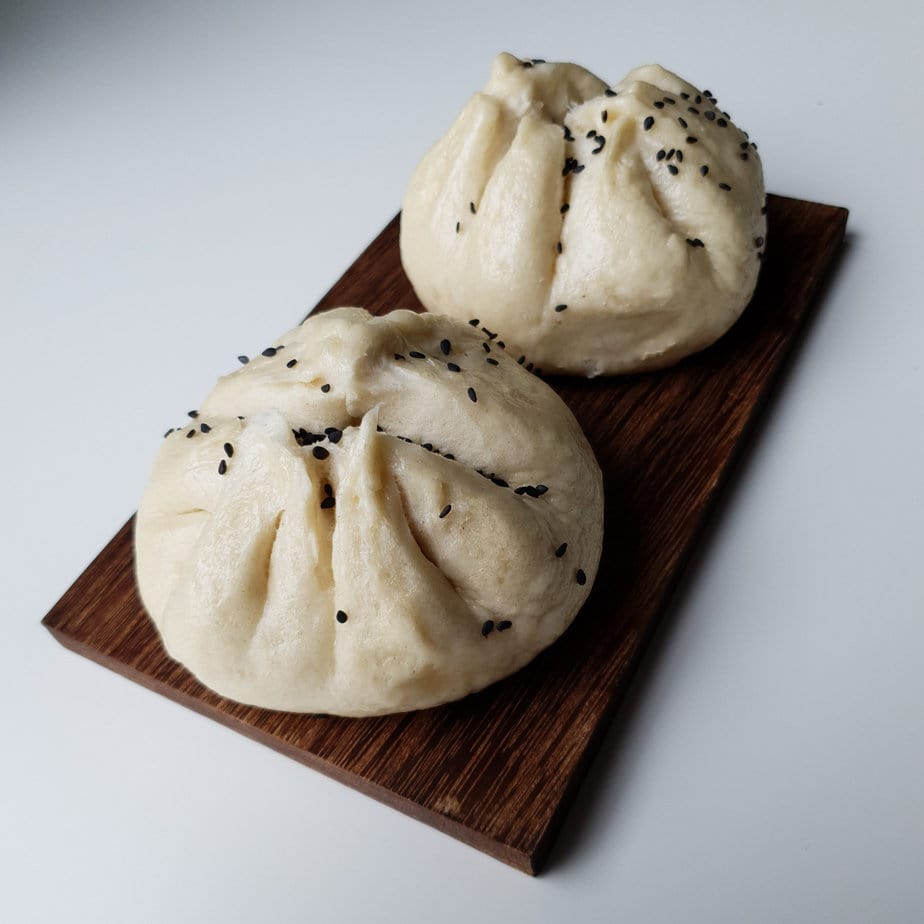
From baozi to nikuman : 700 years in the making
According to legend, the 3rd century strategist Zhuge Liang shaped sacrificial “head buns” to placate a river god, planting the seed of the Chinese baozi. More than a millennium later, in 1349, the Chinese monk Lin Jūnin (Rin Jōin) arrived in Japan with his expertise in mantou and a clever innovation: a fermented dough made with amazake, able to rise without baker’s yeast while accommodating a meatless filling in keeping with Buddhist precepts.
The sweet, bean-filled manjū that followed reigned at tea tables for half a millennium—indulgent, yet decidedly meatless.
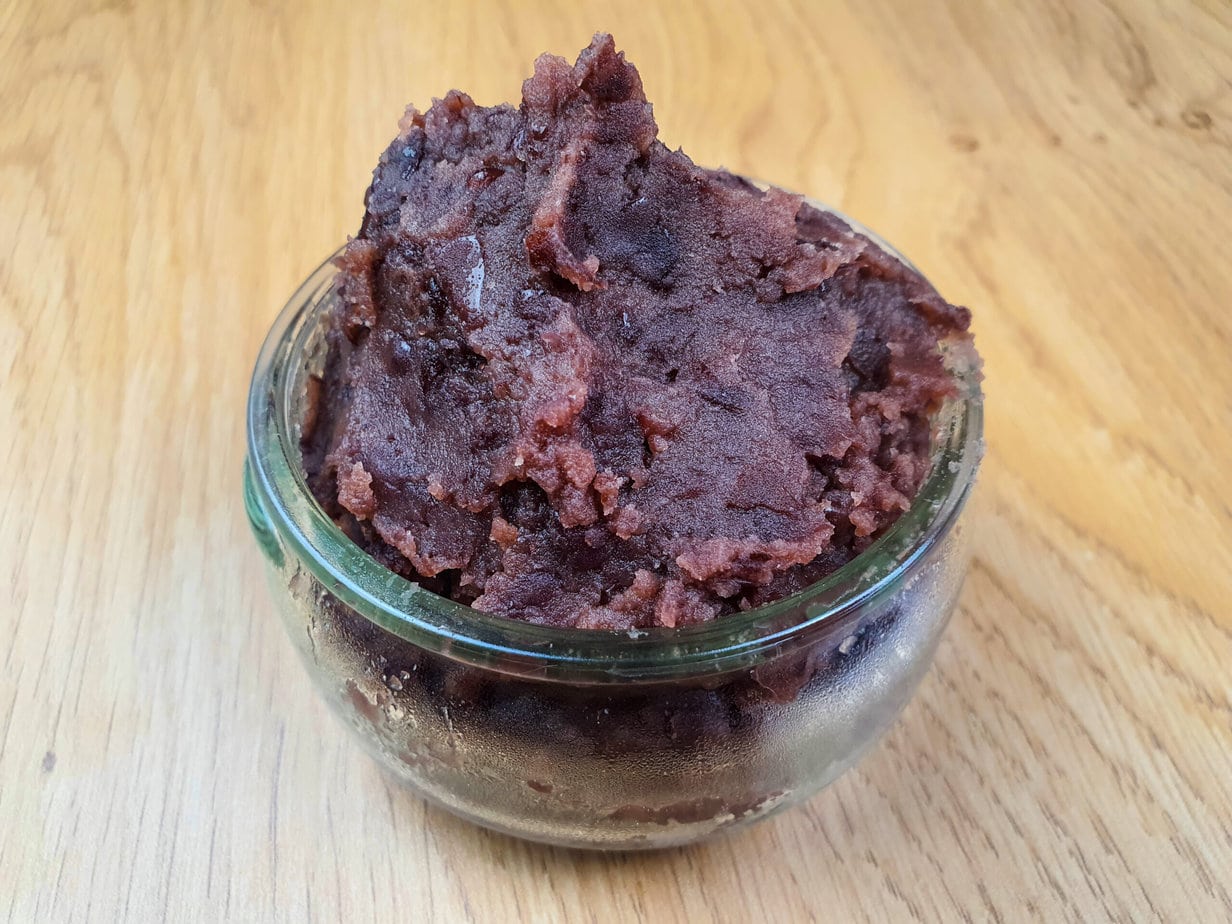
Everything changed after the Meiji Restoration in 1868, which lifted Japan’s taboo on meat. In the newly opened ports, Chinese immigrants steamed pork buns, called chūkaman, for homesick sailors.
In Kobe, the shop Rōshōki coined the term “butaman” in 1915; its small buns studded with shrimp sparked a local craze. Across the archipelago, Shinjuku’s Nakamuraya lightened the seasoning in 1927, toning down strong spices in favor of a gentler balance between soy sauce and mirin; by the early 1930s, nikuman had moved from a Chinatown curiosity to a winter staple across the country.
Regional variations
Ask for a “nikuman” in Tokyo and you’ll be handed a bun. Try the same in Osaka and you’ll get puzzled looks: there, where niku evokes beef, vendors sell the same pork bun under the name “butaman.”
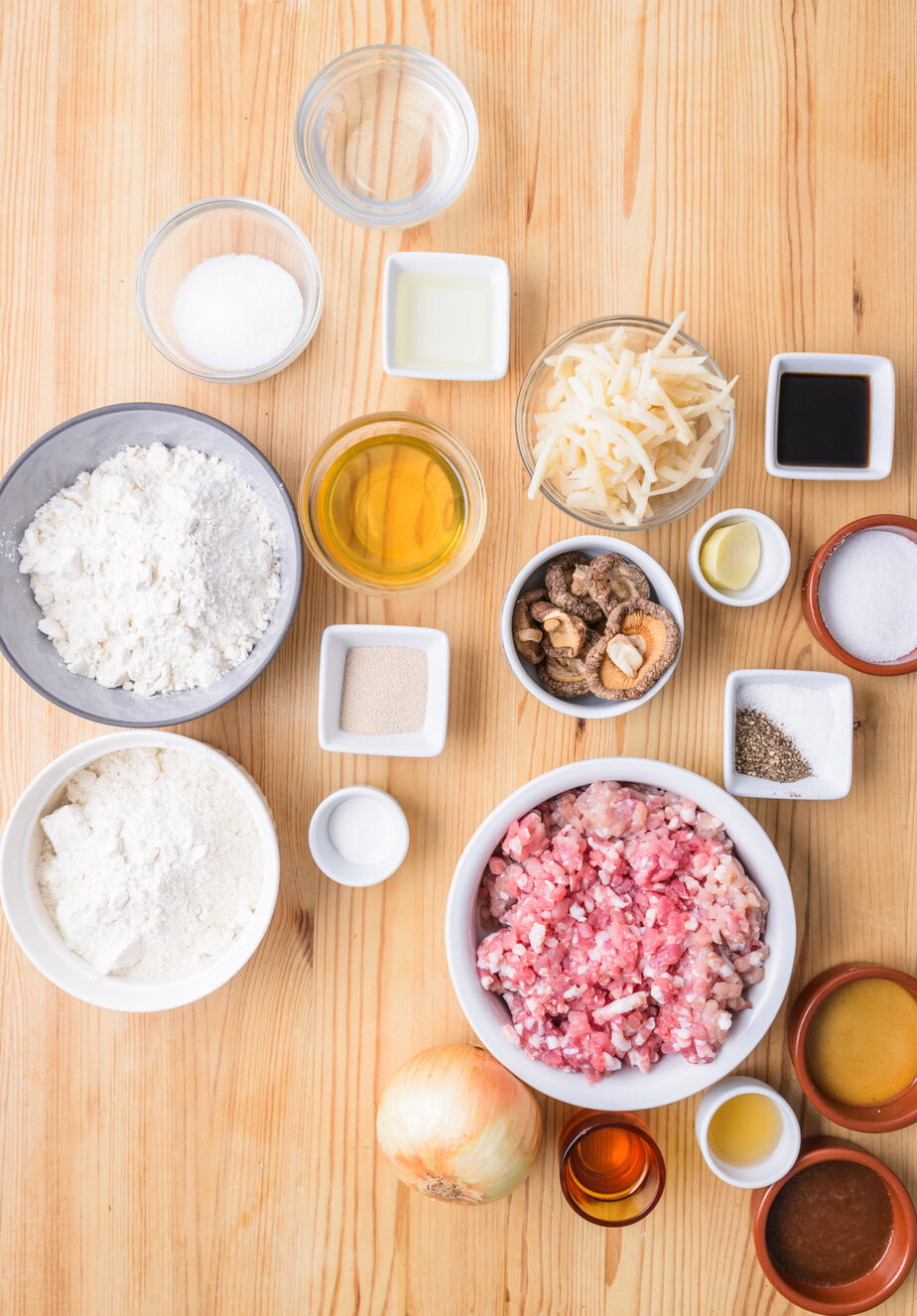
In Kansai, loyalty centers on 551 Horai; its pink boxes perfume homebound trains, each bun accompanied by a dab of karashi mustard that clears the sinuses. In Kobe, the century-old Rōshōki still offers bite-size butaman, while the hawkers of Chinatown in Yokohama flaunt specimens close to 15 cm in diameter.
Seasonality is part of the ritual, too. From late August or early September, convenience stores set out steam-warmed display cases that won’t be switched off until spring; commuters grab a bun with the same reflex as grabbing a coffee.
January 25 is unofficially “Chūkaman Day,” a date chosen because it falls in the dead of winter—the kind of morning when a paper-wrapped bun serves as both pocket warmer and breakfast.
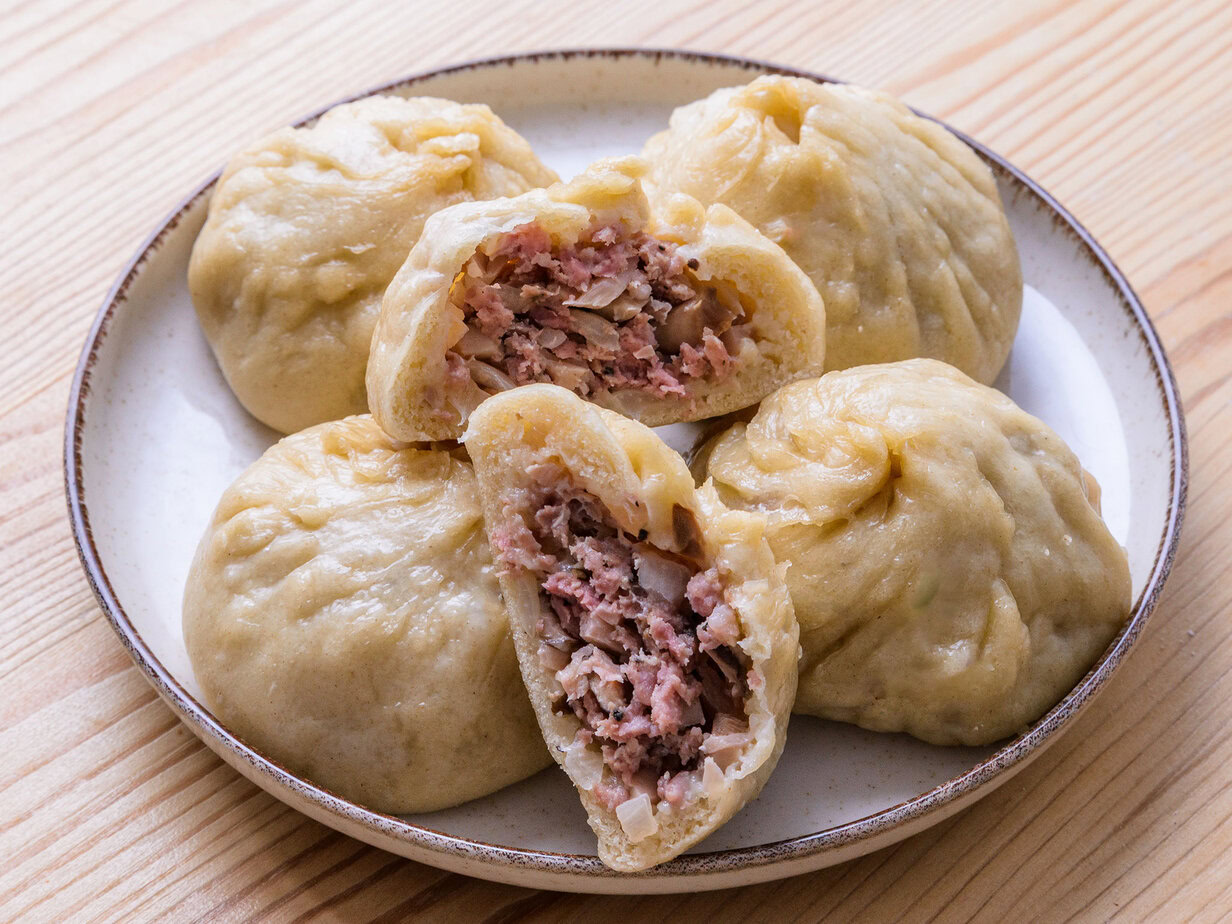
Ingredients
Dough
- 150 g bread flour (10–12% protein)
- 150 g pastry flour (5–10% protein)
- 30 g sugar
- 3 g salt
- 6 g dry yeast
- 3 g baking powder
- 90 g warm water 35-38 °C
- 65 g sake
- 20 g vegetable oil
Filling
- 350 g ground pork about 30% fat
- 150 g onion finely chopped
- 150 g bamboo shoots precooked, diced
- 15 g dried shiitake mushrooms rehydrated, diced
- 5 g ginger grated
- 2.5 tablespoons light soy sauce
- 1.5 tablespoons oyster sauce
- 2.5 tablespoons cooking sake
- 1.5 teaspoons Wei-pa or chicken bouillon paste
- 1.5 tablespoons sugar
- 1.5 tablespoons sesame oil
- salt and pepper to taste
Instructions
Make the dough
- In a bowl, whisk together the two flours, sugar, salt, dry yeast, and baking powder.150 g bread flour (10–12% protein), 150 g pastry flour (5–10% protein), 30 g sugar, 3 g salt, 6 g dry yeast, 3 g baking powder
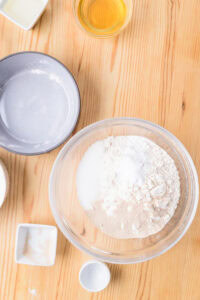
- Add the sake and about two-thirds of the warm water; stir, then add just enough of the remaining water to form a shaggy dough.90 g warm water, 65 g sake
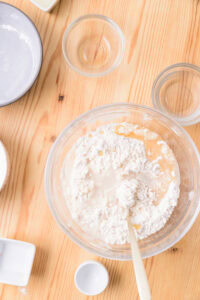
- Knead on the counter for 10 minutes, work in the vegetable oil, then knead for another 5 minutes until the dough is smooth.20 g vegetable oil
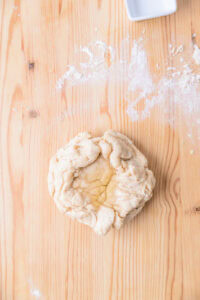
- Shape the dough into a ball, cover, and let rise for 15 minutes at 30 °C.
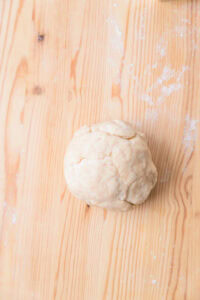
Make the filling
- Rehydrate the shiitake mushrooms, chop the onion and bamboo shoots, and grate the ginger.150 g onion, 150 g bamboo shoots, 15 g dried shiitake mushrooms, 5 g ginger

- In a bowl, combine the ground pork, prepared vegetables, soy sauce, oyster sauce, cooking sake, Wei-pa, sugar, sesame oil, salt, and pepper. Mix until sticky, then divide into 10 portions.350 g ground pork, 2.5 tablespoons light soy sauce, 1.5 tablespoons oyster sauce, 2.5 tablespoons cooking sake, 1.5 teaspoons Wei-pa, 1.5 tablespoons sugar, 1.5 tablespoons sesame oil, salt and pepper
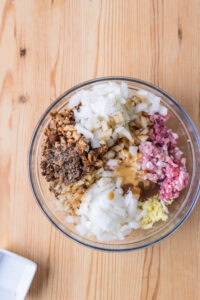
Shaping and steaming
- Punch down the dough, divide into 10 pieces, shape each into a ball, cover, and rest for 10 minutes.

- Flatten each piece into a round, keeping it thicker in the center; add a portion of filling, pleat to seal, then set each bao on a square of parchment paper.

- Let the bao rise for 10 to 15 minutes at 35 °C.
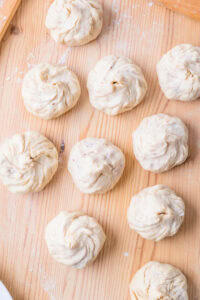
- Steam the bao over rapidly boiling water for 15 minutes, remove from the steamer, and serve hot.
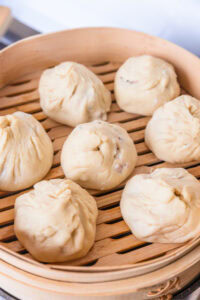
Notes
- Blanching bamboo shoots for 10 seconds removes their astringency and intensifies their aroma.
- Keeping the dough slightly thicker in the center prevents tearing when the filling releases juices during steaming.
Nutrition
Culinary Sources
• Nikuman (steamed pork buns) – Just One Cookbook (English)
• Baozi – Wikipedia (English)
• History of butaman (nikuman/chūkaman) – Butaman Shop (Japanese)
• Why did nikuman follow a different path from manjū (wagashi)? – 皇朝 (Kōchō) (Japanese)
• The original “Rōshōki” butaman – KOBE 豚饅サミット (Japanese)
• Chūka-man – product history – 新宿中村屋 (Japanese)
• Nikuman – traditional and authentic Japanese recipe – 196 Flavors (English)
• Nikuman — Japanese steamed pork buns – La Fuji Mama (English)
• First time making nikuman (steamed pork buns)! – Reddit (English)
• Homemade: steamed pork buns! – Reddit (English)
• The best butaman in Osaka: 551 Horai and Horai – Kansai Odyssey (English)
• How to make nikuman (Chinese-style steamed pork buns)… – Reddit (English)
• One of the best simple culinary discoveries of my adult life. – Reddit (English)

